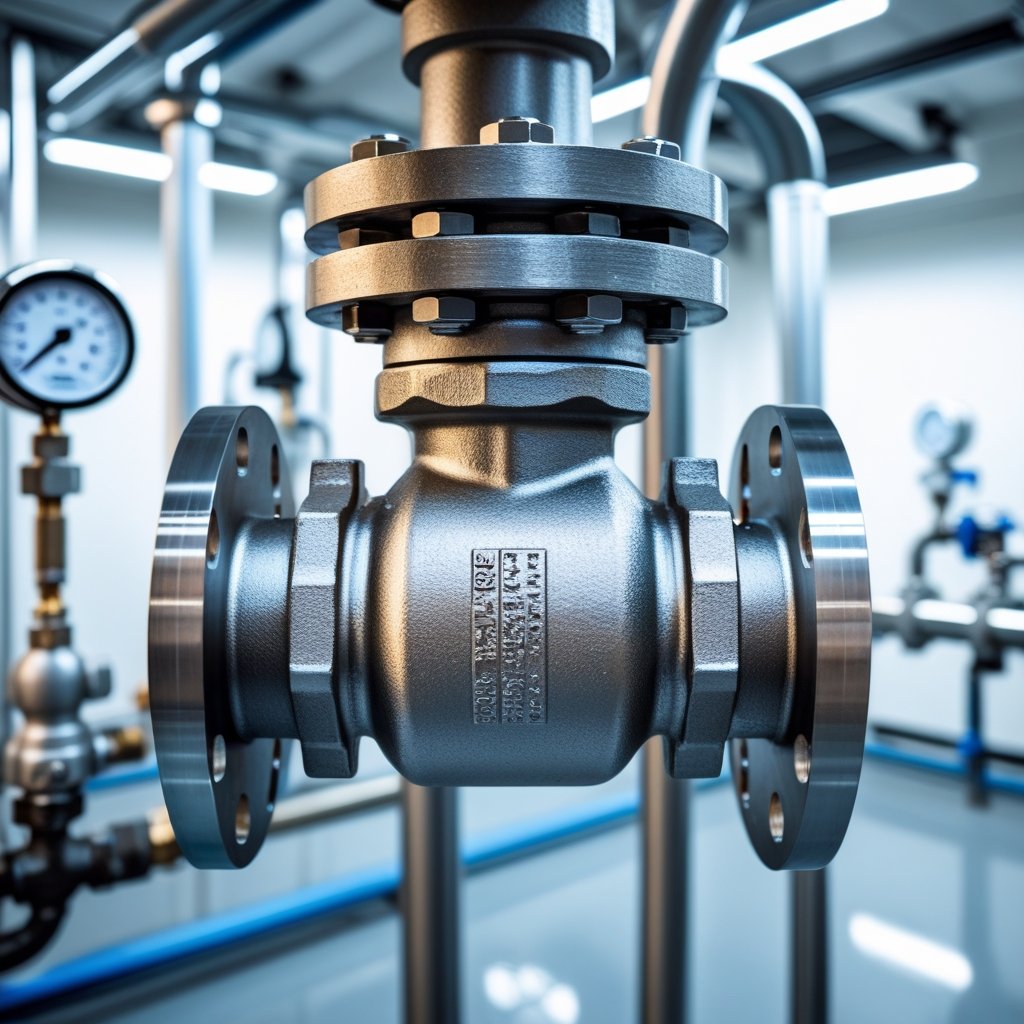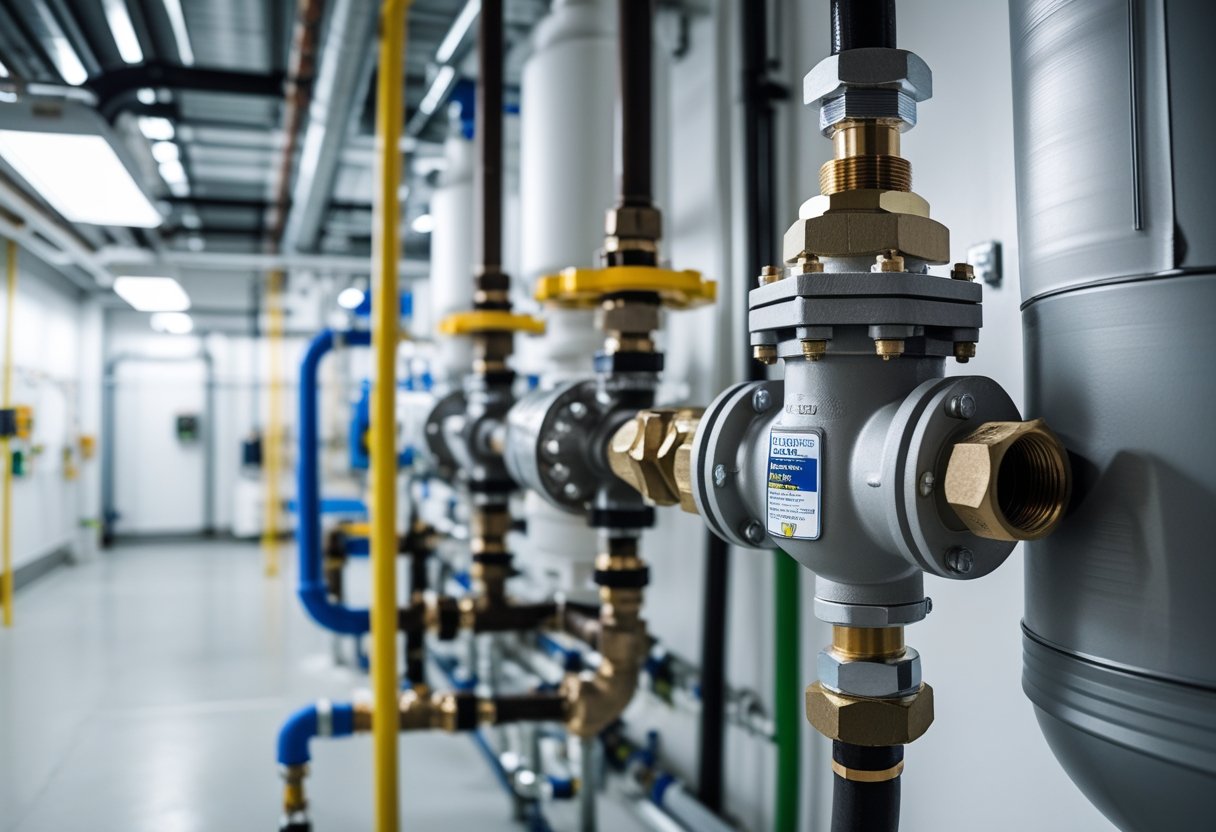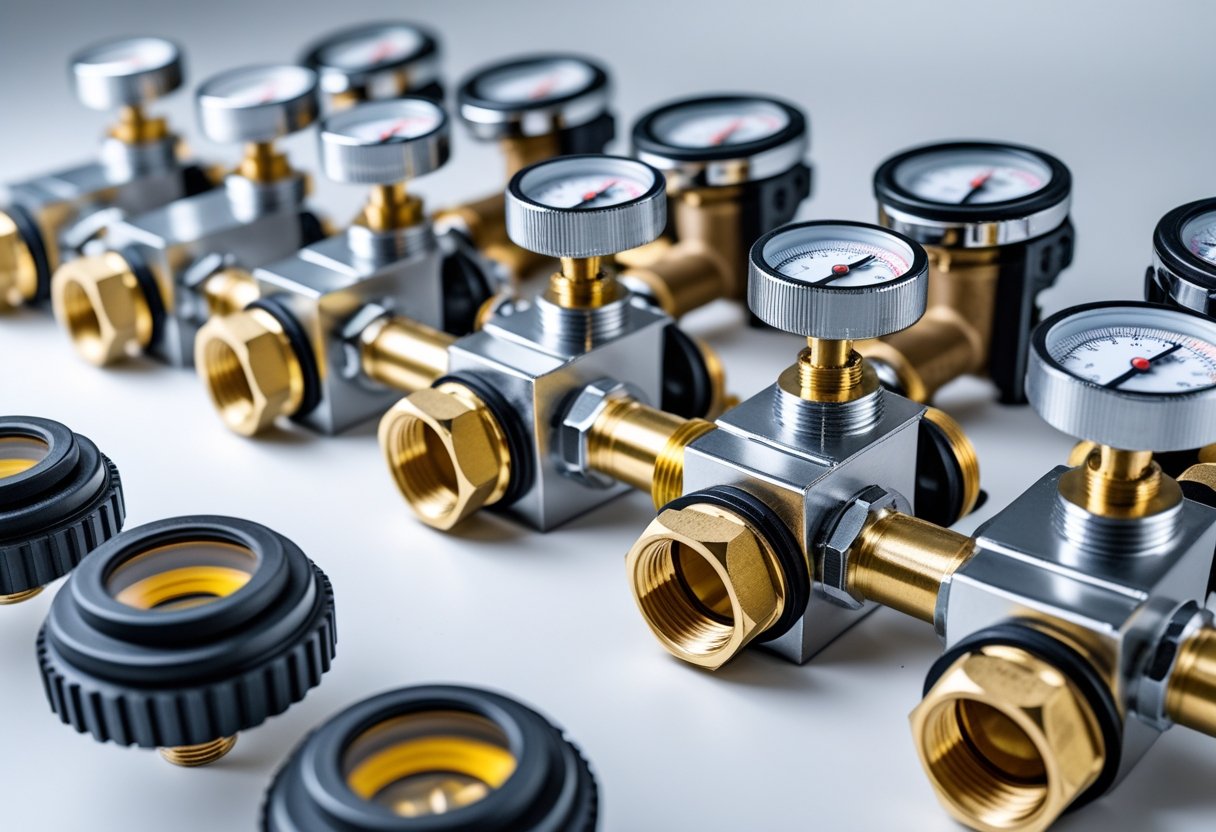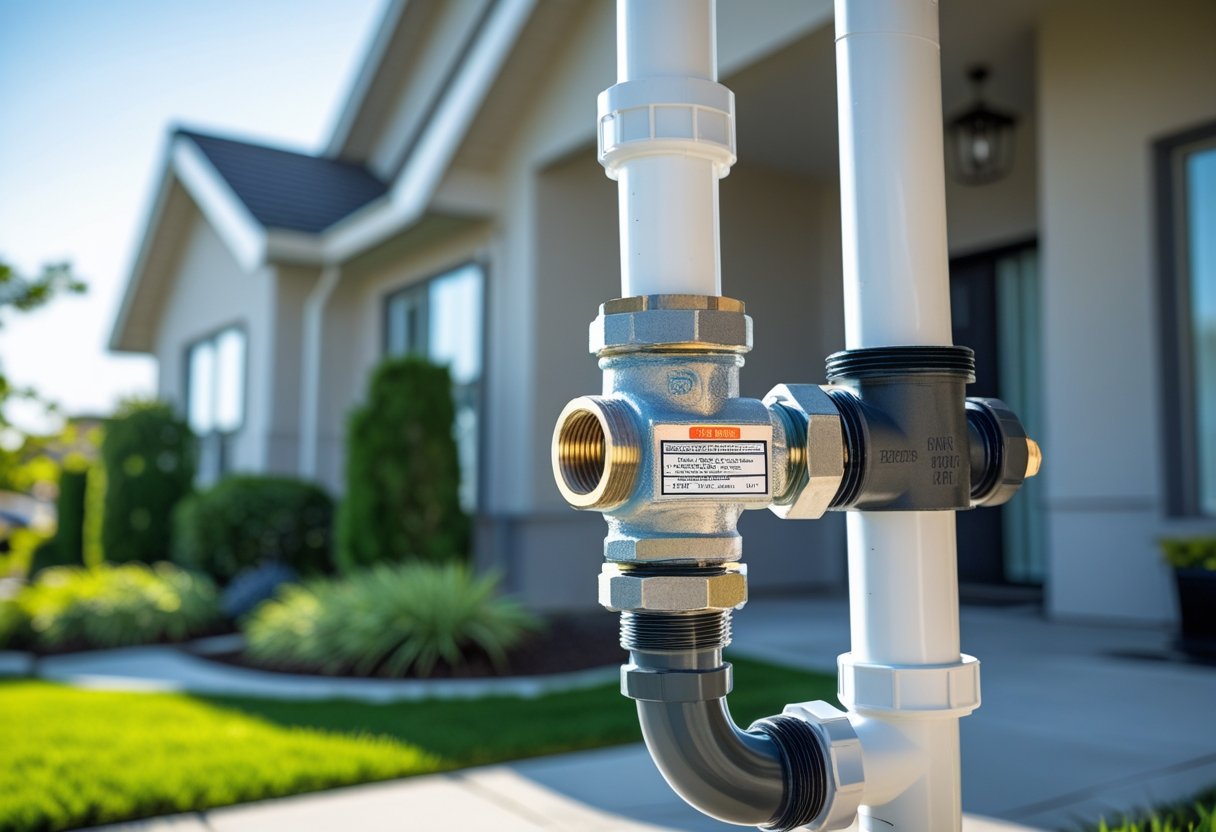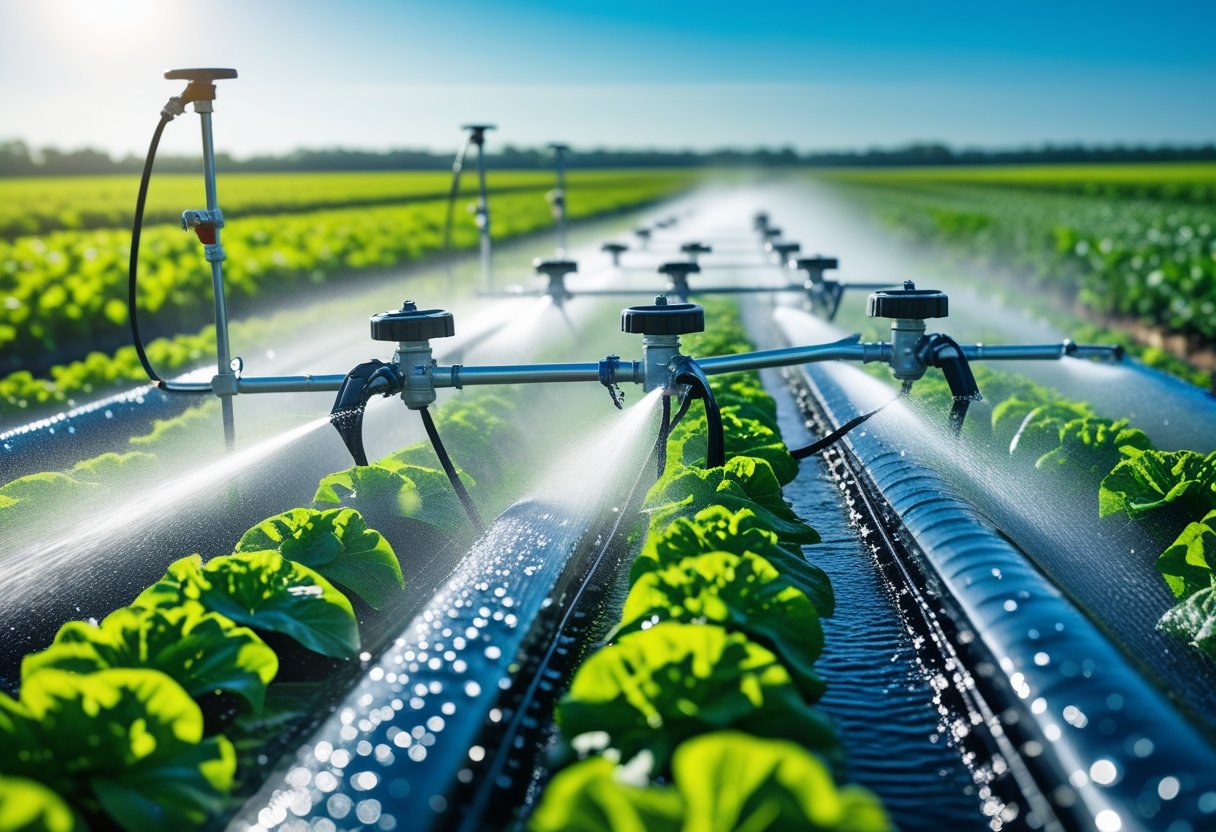When you're trying to keep your water supply clean, picking the right backflow prevention device really matters. The double check valve (DCV) and the reduced pressure zone (RP) assembly are two of the most common options. Basically, the RP device gives stronger protection because it uses a relief valve to let water out if backflow pressure rises too much, while a double check valve just counts on two check valves but doesn't have that extra relief.
So, which one should you pick for your place? A double check valve often does the job for lower-risk setups, but if there's any chance of nasty stuff getting into your water, an RP assembly is the safer bet. At Pacific Backflow, we help folks all over San Diego County figure out which backflow preventer fits their needs and keep them working.
Overview of Double Check Valves
Double check valves keep water from flowing backward in your plumbing. Inside, you'll find two check valves working together to guard your water from contamination. If you want to get a feel for how these work, where you might use them, and why people like them, keep reading.
How Double Check Valves Work
Each double check valve has two spring-loaded valves lined up in a row. They open to let water move the right way, but if water tries to go backward, both snap shut. Pretty straightforward.
Their design gives decent protection, especially in moderate-risk situations. But since they don't have a relief valve, they're not the best for setups where contamination could get serious.
Common Applications for Double Check Valves
You'll usually see these in irrigation systems, fire sprinklers, or low-hazard commercial setups. If your equipment doesn't pose much contamination risk, a double check valve is probably fine.
Take your lawn sprinklers, for example—they might use a double check valve to keep pesticides or dirt from sneaking into your pipes. They're a popular choice because they're reliable and don't cost a fortune.
Benefits of Double Check Valves
Double check valves are easy to maintain and last a good while if you treat them right. Having two valves instead of one means extra peace of mind.
They're also less complicated to install and test compared to something like an RPZ assembly. If you want solid backflow prevention without the headache, they're a good pick.
We handle testing and maintenance across San Diego County, making sure your double check valves stay up to code.
Understanding Reduced Pressure Principle (RP) Assemblies
Reduced Pressure (RP) assemblies keep your water supply clean by using a special valve system. They block dangerous substances from sneaking back into clean lines. Curious how RP assemblies work and where you need them? Let’s break it down.
How RP Assemblies Function
An RP assembly uses two check valves with a pressure-monitored chamber sandwiched between them. This chamber always keeps lower pressure than the supply, so if the first check valve leaks, the second one still holds the line.
There's a relief valve between the checks. If the pressure creeps up, the relief valve pops open and dumps water out, stopping contamination from heading back into your water. That pressure difference is what keeps the whole thing ticking.
Since the relief valve might open when there’s a problem, RP assemblies deliver high safety. But, they're a bit more complicated and need regular testing to make sure nothing's gone wrong.
Typical Uses for RP Assemblies
You'll find RP assemblies wherever the water supply could meet some nasty stuff. Think hospitals, chemical plants, or irrigation systems using fertilizers or pesticides.
They're required anywhere health hazards exist—like in medical buildings or places with hazardous liquids. You’ll see them where contamination could make people sick or mess up the water system.
Local codes usually spell out where you need an RP assembly. That extra relief valve is what makes them so much safer than basic valves.
Advantages of RP Assemblies
RP assemblies protect better than double check valves, mainly because they spit out water if something goes wrong. They're the go-to for high-risk setups.
They help keep drinking water safe from almost any kind of backflow. If the system fails, the relief valve gives you a heads-up, so you can catch issues early.
Yes, they cost more and need annual testing, but you get what you pay for—reliability and safety. We make sure your RP assemblies pass inspection and work like they should.
Key Differences Between Double Check Valve and RP
Both double check valves and reduced pressure (RP) assemblies stop water from flowing backward, but they don’t do it the same way. Their protection levels, designs, and effects on pressure all differ. Here’s what you need to know.
Level of Protection Provided
RP assemblies offer stronger protection than double check valves. They're built for high-risk setups where contaminants could cause real harm.
Double check valves work best for low to moderate risks. They use two check valves in a row, but there’s no relief valve.
The RP assembly’s relief valve jumps in if there’s a problem, dumping water and blocking dangerous stuff from your water supply. That’s why you’ll see RPs in hospitals or chemical plants.
Design and Construction
Double check valves come as one unit with two check valves. Each only lets water go forward. This simple setup makes them easy and cheaper to deal with.
RP assemblies are a bit more involved. You’ve got two check valves and a relief valve between them. The relief valve checks pressure and dumps water if backflow pressure gets too high.
RPs also have test ports, so professionals can easily check if everything’s working. Double check valves might not have these.
Pressure Loss Differences
Both devices cause some pressure loss as water moves through. RP assemblies usually drop the pressure more than double check valves.
That’s because RPs have the extra relief valve and tighter seals for safety. Sure, you lose a little more pressure, but it’s the price for better protection.
Double check valves let water flow with less resistance, so pressure loss is smaller. If your water system can’t handle much pressure drop, a double check valve might be better—but only for lower-risk jobs.
Need help figuring this out or getting your devices tested? Pacific Backflow covers all of San Diego County with honest, fast service.
Backflow Prevention Performance
Backflow preventers keep water moving the right way and stop unwanted water from sneaking back. The best device depends on your risk and the type of backflow you might face. Here’s a look at how each handles these challenges.
Suitability for Hazard Levels
A double check valve assembly (DCVA) works well where contamination risk is low. Its two check valves block water from reversing, but it won’t protect you from serious hazards. Good for homes or light commercial setups with mild risks.
A reduced pressure zone (RPZ) assembly is for higher hazards. It’s got two check valves and a relief valve in the middle. If one valve fails, the relief valve dumps water out to stop backflow. RPZs are required where contamination could be a big deal—like industrial or heavy-duty irrigation systems.
Effectiveness Against Back Siphonage and Backpressure
Both devices stop backflow from back siphonage—that’s when water pressure drops and tries to pull dirty water back in. Double check valves handle this by only letting water move forward through two valves.
For backpressure—when downstream pressure builds up—double check valves still work, but only for low-risk stuff.
RPZ assemblies do better against both back siphonage and backpressure. Their relief valve pops open if pressure threatens to push water backward. That makes RPZs more reliable when pressure gets weird.
If you want help picking or maintaining these in San Diego County, Pacific Backflow can test, repair, and install whatever you need.
Installation Requirements and Considerations
Putting in a double check valve or an RPZ assembly isn’t just about hooking it up and walking away. Where you put it, how you set it up, and your drainage all matter for performance and maintenance.
Location Guidelines
Pick a spot where the device is safe from freezing and crazy heat. Both double check valves and RPZs should sit above ground, ideally inside a utility room or a protected box. Don’t put them where floods could reach.
Keep the device close to your water source to avoid pressure loss, but not too close to anything gross. Local codes usually say backflow preventers must be visible and easy to get to for annual inspections and service.
If you have to put it outdoors, use a weatherproof enclosure and leave space around it. That way, you protect the device and make it easier to access.
Orientation and Accessibility
Set your backflow preventer upright and level. If you don’t, it might not work right, or it could just fail. The valves have arrows to show which way water should flow—follow those.
Leave enough room around the device for testing and repairs. Usually, you want at least a foot of clearance all around, but check your local rules. Make sure you can reach the shutoff valves, too.
Good access saves time and money later on. If you bring in pros like Pacific Backflow, they’ll make sure your setup meets all the rules.
Drainage Provisions
Drainage really matters, especially for RPZ assemblies, since they’ll spit out water when relieving pressure. You need a drain pan or floor drain close by to catch this and avoid flooding.
Make sure the area slopes away from the device so water doesn’t pool. Standing water can wreck your backflow preventer and the area around it.
Double check valves don’t usually release much water, but having a drain is still smart in case of leaks or during testing. It keeps things tidy and helps avoid slipping.
Setting up good drainage is often required by code. It keeps your system working and protects your property.
Maintenance and Testing Needs
Both double check valves and RPZs need regular care if you want them to work when you need them. Knowing how often to check and what to look for helps keep your water safe.
Inspection Frequency
Get your backflow devices inspected at least once a year—doesn’t matter if it’s a double check valve or an RPZ. Regular checks catch leaks, cracks, or worn parts before they turn into trouble.
If your system sits near chemicals or irrigation, you might want to check more often. RPZs, with their extra moving parts, sometimes need a closer eye.
Sticking to a schedule also keeps you in line with local rules. Pacific Backflow can remind you when it’s time, so you don’t fall behind.
Testing Procedures
Testing checks if your valve actually stops water from flowing backward. For double check valves, you need to see if both check valves close up tight when under pressure.
RPZ devices take things a step further. They have a relief valve, so the tester has to measure pressure and confirm the relief valve opens when it’s supposed to—especially when pressure changes.
Only a certified tester can do these checks right. If you hire a pro like Pacific Backflow, they’ll handle the test and file all the paperwork, so you stay compliant without the headache.
Regulatory Standards for Double Check and RP Assemblies
You’ve got to know which certifications and codes apply when you’re dealing with double check valves or reduced pressure (RP) assemblies. That’s how you keep your system legal and your water clean.
Approval Certifications
Both double check valves and RP assemblies need to meet certain testing and approval standards before you can install them. Usually, you’ll see certifications from groups like the American Water Works Association (AWWA) or the Foundation for Cross-Connection Control and Hydraulic Research (FCCCHR). These organizations make sure the devices actually do their job—keeping contaminated water out of your drinking supply.
RP assemblies face stricter certification since they’re designed for higher-risk situations. Double check valves have less demanding standards and work for lower-risk setups. Before you install anything, check for certification labels that prove your device passed the tests.
Compliance with Local Codes
Local water authorities decide where you can use double check valves or RP assemblies. Their rules depend on how risky your system is. High-risk setups—like irrigation systems that use pesticides—usually require an RP assembly by law. Lower-risk stuff might only need a double check valve.
You’ve got to follow these rules to avoid fines and keep the water safe. Services like Pacific Backflow in San Diego County handle annual testing and file the reports with the water district, so you don’t have to worry about missing a step.
Cost and Longevity Factors
When you’re picking between a double check valve and an RPZ device, you’ll want to think about installation cost, maintenance, and how long the thing will last. These details matter for your budget and for how often you’ll be dealing with repairs or replacements.
Initial Installation Costs
Double check valves almost always cost less to install than RPZ devices. The design is simpler—no relief valve—so it’s easier and quicker to set up. Less labor, fewer parts.
RPZ devices come with more parts and need careful setup because of the relief valve. That bumps up the price for both the device and the installation work. If your property has a high contamination risk, local codes might require an RPZ anyway, even if it’s pricier.
Ongoing Maintenance Expenses
You’ll need to test and maintain both devices regularly. RPZs are a bit fussier—they’ve got more moving parts, and that relief valve needs attention, so maintenance takes longer and costs more.
Double check valves don’t need as many repairs, but you still have to do annual testing. At Pacific Backflow, we always recommend timely maintenance for both types to avoid expensive emergencies. Staying on top of testing keeps you in compliance and your system running right.
Expected Service Life
Double check valves usually last five to ten years if you take care of them. RPZ devices hit about the same mark, but you might have to swap out parts more often because of the relief valve.
If your device starts failing or showing wear, it’s smarter to replace it early instead of risking contamination. Good equipment and pro installation can definitely help your backflow preventer last longer and keep your water safer.
Choosing the Right Backflow Preventer
Choosing the right backflow preventer really depends on your site’s risk level and knowing what mistakes to avoid. That’s how you keep your water safe and follow the rules.
Assessing Site Needs
Start by figuring out your hazard level.
- Double check valves are fine for low-risk spots—think irrigation or basic plumbing.
- RPZ devices are for high-risk areas, like chemical or industrial setups where backflow could get ugly.
Local water authorities might require certain devices depending on your property. Knowing your risk and the local rules makes the choice easier.
Regular testing—like what Pacific Backflow does in San Diego County—makes sure your device keeps working and fits your needs.
Common Selection Mistakes
People often pick a double check valve for a high-risk spot, thinking it’s easier or cheaper. That can let contaminants backflow, which is just asking for trouble.
Ignoring local codes is another big one. Every area has different requirements, and missing them could mean fines or unsafe water.
Maintenance gets overlooked too. Some devices need more frequent checks, and skipping those can lead to problems down the line.
Just steer clear of these pitfalls. Your water will be safer, and your system will run smoother.
Frequently Asked Questions
Here’s where we get into how double check valves and RPZ devices actually work, what goes into installing and maintaining them, when to use which, and what rules you have to follow. Knowing these basics helps you figure out what fits your water system best.
What is the role of a double check valve in water systems?
A double check valve keeps water from flowing backward in your plumbing. It uses two check valves for extra backup. This setup helps block contaminants from getting into your clean water, especially in low- to moderate-risk situations.
How does an RPZ work to protect against backflow?
An RPZ (Reduced Pressure Zone device) blocks backflow using two check valves and a relief valve. If pressure gets too high between the check valves, the relief valve dumps water out, making it safer for high-risk situations where health hazards really matter.
Can you explain the installation differences between double check valves and RPZ devices?
Double check valves are smaller, simpler, and easier to install. RPZ devices are bulkier and need more space because of the relief valve. Both need to go in spots you can get to for testing and maintenance.
What maintenance is required for double check valves compared to RPZ valves?
They both need annual testing to make sure they’re working right. RPZ devices need more frequent checks because they’re more complex and have that relief valve. Double check valves are easier to look after but still need professional testing for safety.
When is it more appropriate to use a double check valve rather than an RPZ?
Go with a double check valve in low- to moderate-risk situations—irrigation, fire sprinklers, that sort of thing. RPZ devices are the pick for high-hazard spots where contaminants could seriously threaten health, like chemical plants or hospitals.
What are the regulatory and compliance differences for double check valves and RPZ assemblies?
Local water authorities tend to require annual testing for both double check valves and RPZ assemblies, but let’s be real—RPZ assemblies face tighter regulations, especially since they’re used in higher-risk spots. It’s honestly a hassle to keep up with every little rule, but if you don’t follow your water district’s guidelines, you might end up with a headache later. If you’re in San Diego County, Pacific Backflow offers testing and repairs, which can save you a lot of trouble.

